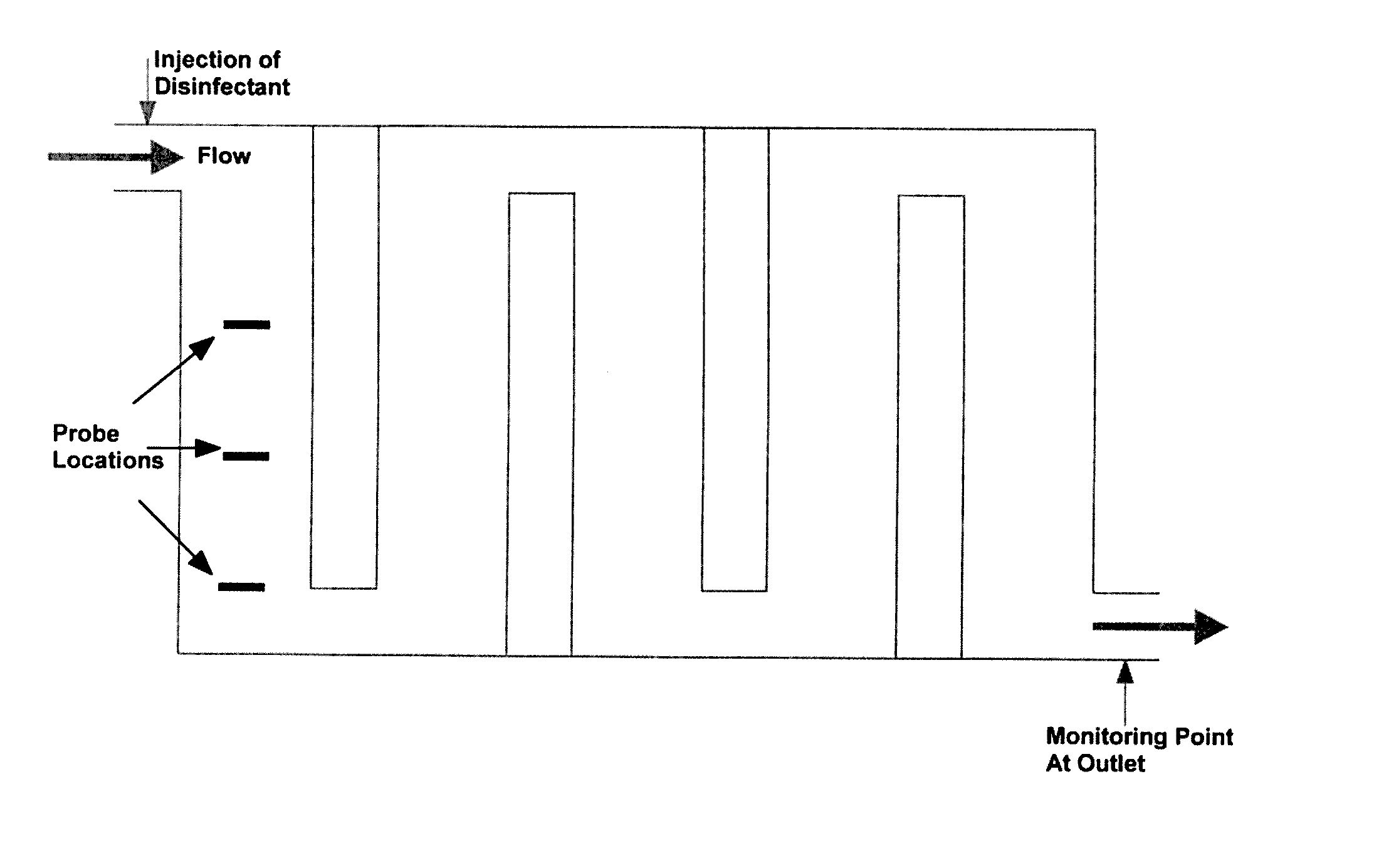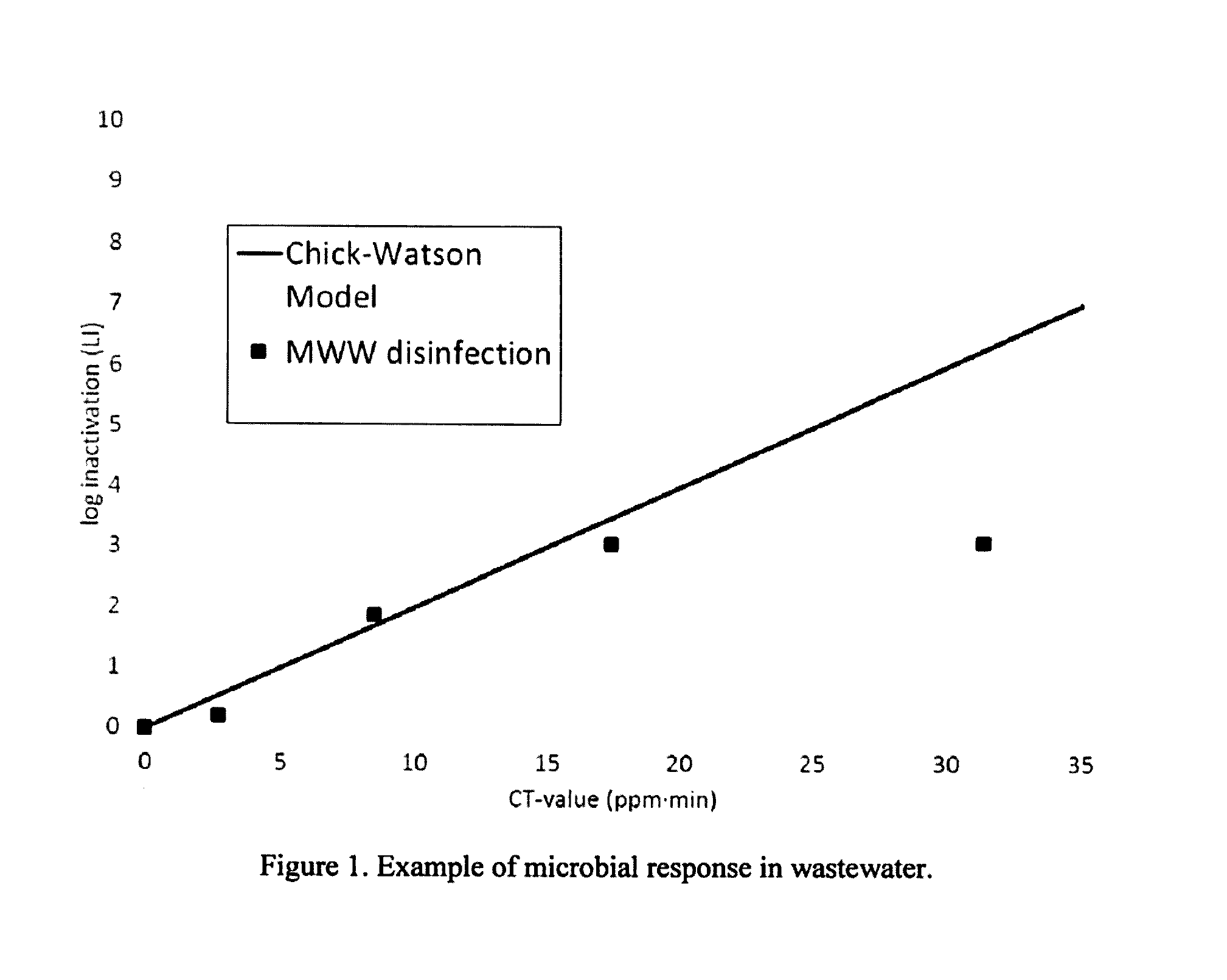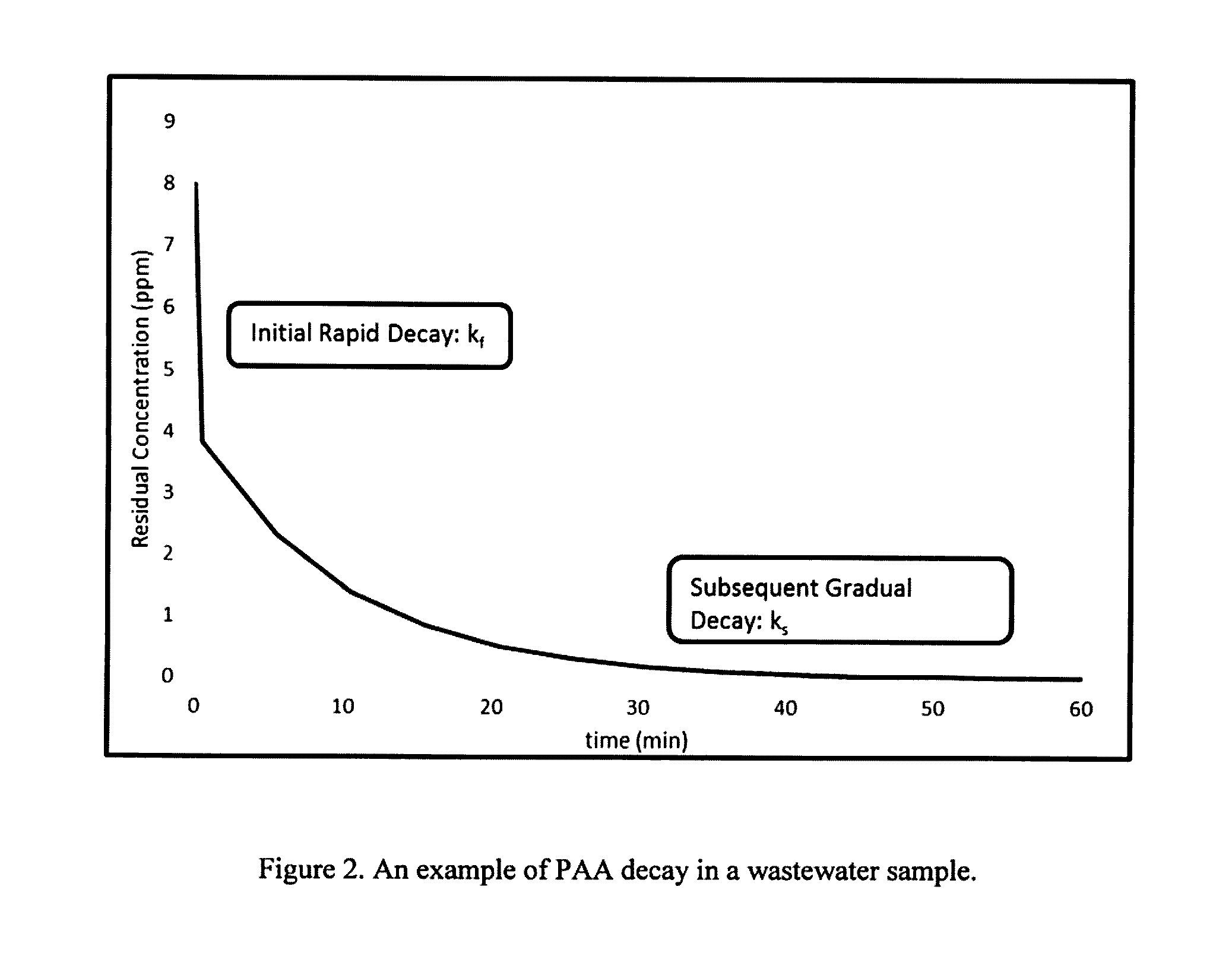Process and Device for the Treatment of a Fluid Containing a Contaminant
a technology of fluid treatment and contaminant, applied in water/sludge/sewage treatment, water treatment parameter control, specific water treatment objectives, etc., can solve the problem of high residual disinfectant concentration in the treated water, add unnecessary costs to the operation of the treatment plant for quenching the disinfectant, and low disinfection level, so as to accurately predict and control the performance
- Summary
- Abstract
- Description
- Claims
- Application Information
AI Technical Summary
Benefits of technology
Problems solved by technology
Method used
Image
Examples
Embodiment Construction
[0213]An important aspect of the current invention is the use of the residence time distribution (RTD) to estimate the system performance. In the simplest case, the RTD can be considered a Dirac delta function, as would be the case of purely plug flow—an assumption that has been made in the prior art discussed above. Alternatively, the RTD can be estimated using models of the system by utilizing numerical methods such as computational fluid dynamics (CFD). Alternatively, the RTD can be measured online through the use of appropriate tracers. In this latter case, the measured RTD could be done on a continuous basis, or an RTD can be estimated through experiments done periodically (especially at startup). However, in the current embodiment, the RTD is estimated using the following equation:
p=(x+tu)-(x-tu)24Dt4πDt3,(14)[0214]where x is the axial location within the reactor, D is the reactor dispersion and u is the average flow velocity. Equation (14) represents a standard form for the R...
PUM
| Property | Measurement | Unit |
|---|---|---|
| Concentration | aaaaa | aaaaa |
| Mechanical properties | aaaaa | aaaaa |
| Biological properties | aaaaa | aaaaa |
Abstract
Description
Claims
Application Information
 Login to View More
Login to View More - R&D
- Intellectual Property
- Life Sciences
- Materials
- Tech Scout
- Unparalleled Data Quality
- Higher Quality Content
- 60% Fewer Hallucinations
Browse by: Latest US Patents, China's latest patents, Technical Efficacy Thesaurus, Application Domain, Technology Topic, Popular Technical Reports.
© 2025 PatSnap. All rights reserved.Legal|Privacy policy|Modern Slavery Act Transparency Statement|Sitemap|About US| Contact US: help@patsnap.com



